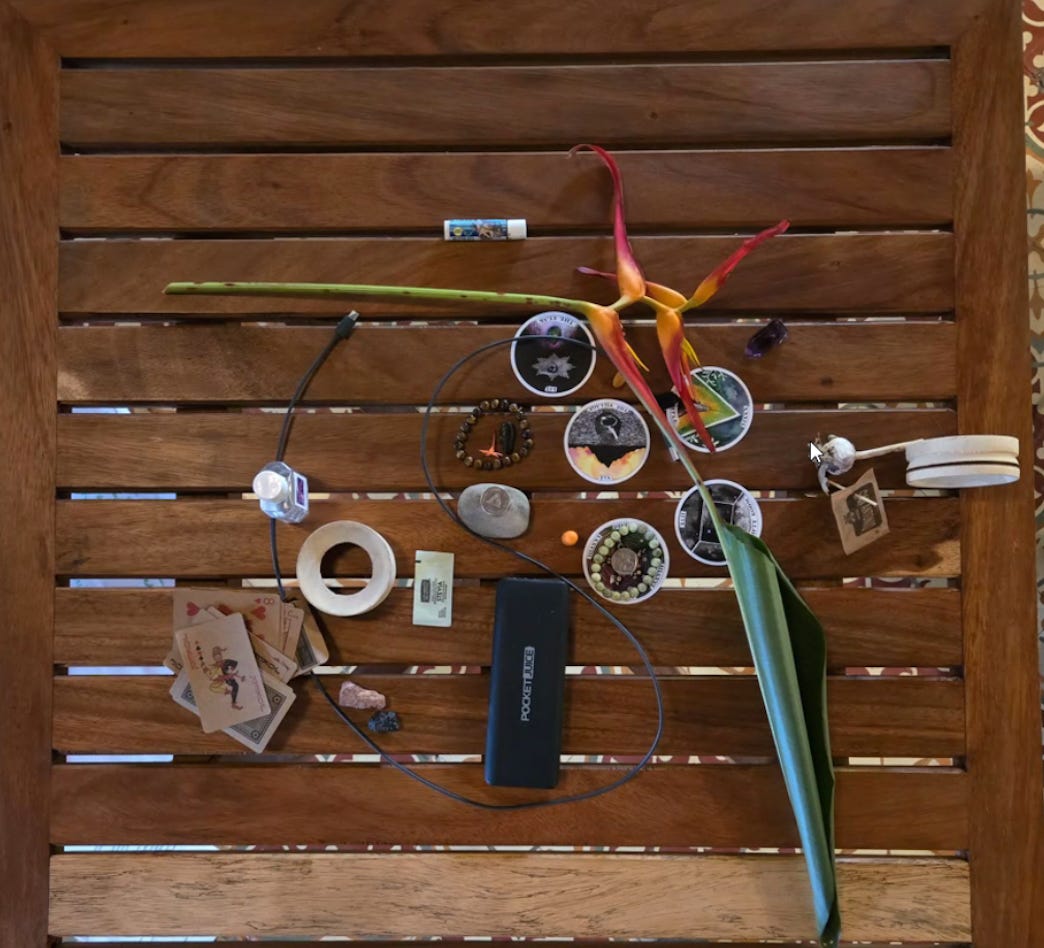Image of our first map
Building in Buffers
It’s so difficult to find ways to write about the experience we had in Nicaragua for the Sustainable Herbs Initiative Learning Journey and I’m very grateful to what others have shared so far. I’ll share just a few thoughts now about the mapping exercise we did as a way to talk about the underlying shifts we experienced.
On the final afternoon, we did 3-D mapping. We’ve done this before in SHI Learning Labs, each in our Zoom rooms with our individual maps. But this was the first time we’d done it in small groups, together. We followed the structure laid out by the Presencing Institute: Each group was to map the current reality of the herb industry and to sense into what each of us individually, in our companies, and collectively through SHI, can do to bring about the shifts needed.
In our first map, primary processors (farmers and wild harvesters represented by the head of garlic from my garden in Vermont) were squeezed against global poverty and climate change, crushed by the historic weight of an extractive industry, and far from the center of power (represented as a power block) where decisions and money are made.
Freddy Lobo, the farmer in northern Nicaragua that my small group had visited earlier in the week, planted turmeric on his 7 hectare land to provide a buffer, a little more financial padding or, as he put it, to have another happy time in the year when he has something to harvest and a chance to make money.
Jefferson Shriver, Founder and CEO of Doselva and host for our trip, talked about building in buffers as a risk mitigation strategy. Buffers imply inefficiencies, he said, but they aren’t. They are what enable him to continue to operate given the risks and challenges of sourcing turmeric and ginger from a region of coffee farmers.
Participants in the Learning Journey later said that the Learning Journey itself provided a buffer for them. One said it injected a bit of juice, because now he feels like he doesn’t have to hold it all himself. Others mentioned how it deepened this community of friends and colleagues to lean on in an industry where everyone is increasingly squeezed by decisions made for reasons other than creating a buffer and ease for farmers or primary processors or even their employees.
Before heading out to visit farmers in small groups, I led the group on a short exercise picked up from EarthWalk, a Jon Young inspired nature program my children attended as children. We first practiced eagle eyes, focusing all of our attention on one small thing, and noticed how that felt in our bodies. Try it.
And then we shifted into owl eyes, seeing the whole, which requires shifting into a different part of ourselves to perceive. Try this as well, notice how it makes you feel.
I invited everyone to practice moving between the two during the day.
From the perspective of eagle eyes, buffers don’t factor in. Taking a week for employees to spend in Nicaragua on tasks not directly related to accomplishing their job is an extravagance. But from the broader perspective, they are essential to how the overall system works.
As Matt Richards said, at Organic Herb Trading Company they build into their approach the understanding that “What happens if?” will happen. And the question is then, will they have the buffers needed to weather what arises when it does?
Putting Spirit at the Center
Our second map
This shift in understanding buffers is, in my mind, directly related to one of the key shifts we made from our first map to the second one (the other two were lifting the veil so that consumers could actually see beyond the beautiful bird of paradise flower preventing them from seeing the impacts of their decisions, and taking fear off the table, more on those in another post).
In our first structure, a piece of quartz, representing spirit, was off to the side, on the edge, and had fallen over. We stood it up, and moved it to the center, placing it on top of the power block. We distributed the money (to the farmers, processors, wild harvesters, to the Sustainable Herbs Initiative, to consumers who were then empowered with the awareness of how their purchases could make a difference).
To shift from using power as a way to increase money to having that power be a way to increase care for the intrinsicness of life, all life.
To shift from a system organized around money to one organized around celebrating life. Where sourcing herbs is a way to create healthy resilient communities (of harvesters, farmers, processors, sourcing specialists, sustainability staff, everyone involved) that enhances wellness for everyone.
Isn’t that ultimately the purpose of producing products made with medicinal plants? To enhance the wellness of us all?





